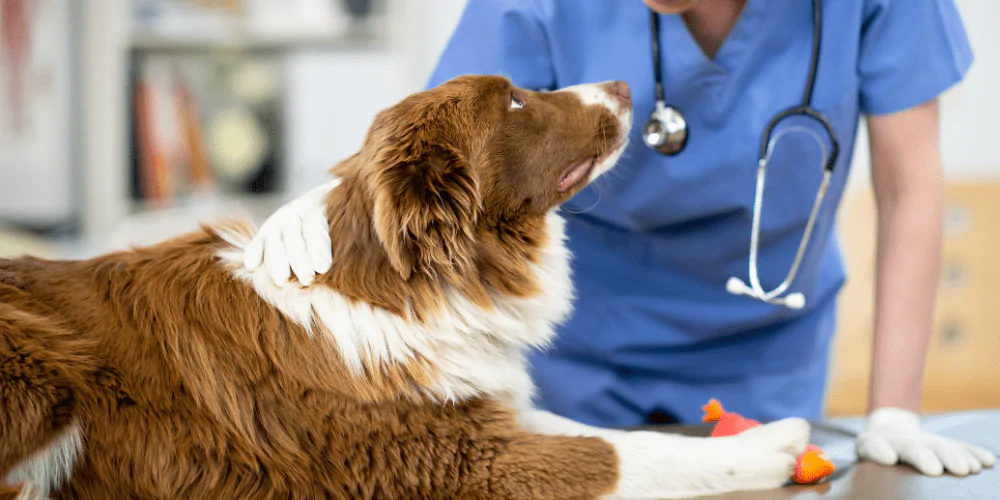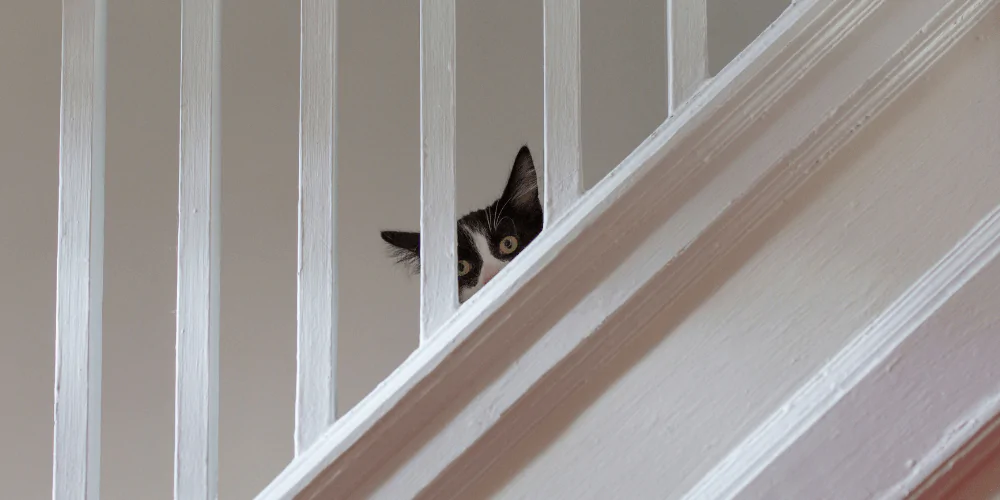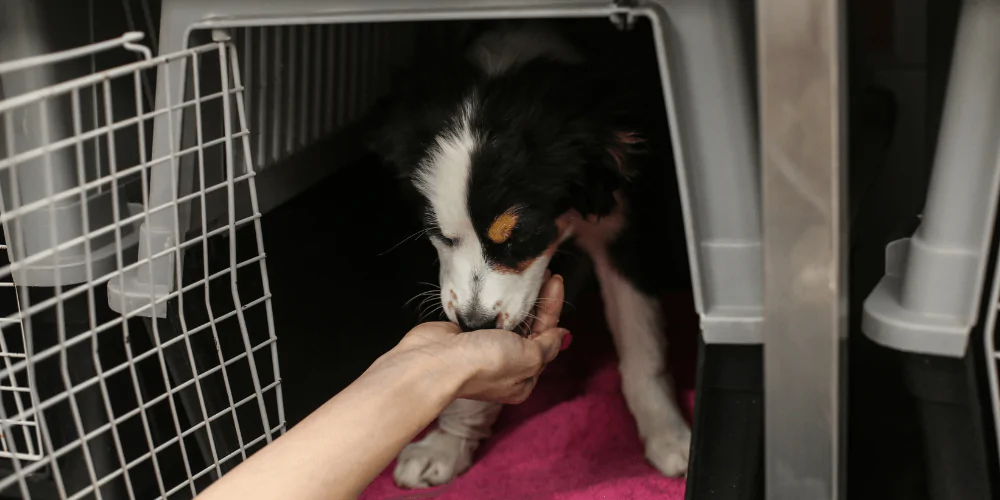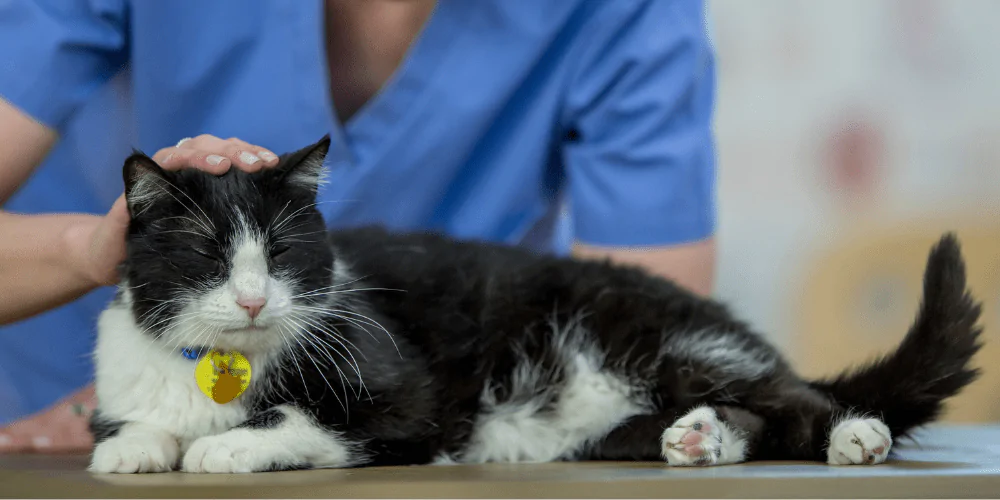
How to make your pet’s visit to the vet less stressful

Dr Scott Miller
20 October 2023 | 4 minutes read
Many cats and dogs are anxious about seeing the vet, leading to stressful experiences for both pets and their parents.
Expert vet Dr Scott Miller looks at why your pet might be scared of the vet and shares his top tips for making visits more relaxed.
- Why is it important to take my pet to the vet?
> Benefits of keeping your pet calm at the vet - Why is my pet scared of the vet?
- How to prepare your pet for vet visits
- How to keep your pet calm during their vet visit

Why is it important to take my pet to the vet?
Regular vet visits are essential for your pet’s health and well-being. It’s where they have:
- Cat boosters and dog boosters
- Check-ups to review their general health and spot any potential issues before they get worse
- Professional medical treatment for accidents and illnesses
You can also turn to your vet for support on alternative treatment options, exercise advice, and guidance on changes to your pet’s diet.
> Benefits of keeping your pet calm at the vet
Finding ways to help your pet feel calm and relaxed during their vet visit creates a more positive experience all round. For example:
- Your vet can more easily carry out a thorough exam to diagnose any problems, without your pet’s stress causing resistance.
- You’ll feel comfortable taking your pet to a range of vet appointments, from nail clippings to health checks and vaccination boosters.
- There’s less chance that your pet will become agitated and lash out, unintentionally harming themselves or others in the process.

Why is my pet scared of the vet?
Pets may be nervous about visiting the vet because they:
- Had a negative experience in the past, such as an uncomfortable procedure
- Are unsettled around unfamiliar sights, smells, people, and animals
- Aren’t used to being handled
- Don’t like having people in their personal space

How to prepare your pet for vet visits
There’s a few things you can try doing at home to help teach your pet that vet visits aren’t something to be nervous about.
Research your vet clinic
Take the time to look at reviews for different vets and then pop in to meet some of the staff. Choosing a friendly clinic where your pet will feel comfortable can help get you started on the right paw.
Stop in at the vet between appointments
Only taking your pet to the vet for exams and treatment can create a negative association. So try and drop in between appointments to let your pet sniff, walk around, and be fussed by staff! This way they’ll learn that the clinic can be a happy and relaxed place. The earlier you can start doing this, the better.
Get your pet used to a carrier
Start carrier training as soon as possible to help your pet adapt to being in and around it. Keep the carrier out at all times so it becomes a natural part of the home. Always bring your pet to the carrier, not the other way around.
Regularly handle your pet
Help your pet get used to having different parts of their body handled in preparation for vet examinations. This includes gently touching areas like the mouth, ears, paws, tail, and stomach.
Look for appointments at quieter times
If noises overwhelm your pet, try and book an appointment at the start or towards the end of the day. The clinic may be quieter during these times which may help your pet feel calmer.
Use calming aids
There are lots of pet-safe calming supplements and aids available to help ease your pet’s anxiety before their visit. Your vet can recommend the right option for your individual cat or dog.

How to keep your pet calm during their vet visit
Now that you’ve arrived at the clinic, here’s what to do to encourage your pet to feel calm and relaxed.
Make your vet aware they’re nervous
Your vet will always do their best to make your pet feel as comfortable as possible. But it’s good to let them know if your four-legged friend is particularly nervous about appointments.
Use calming techniques
Gently rubbing your pet’s ears or belly while they stand on the vet table can be soothing. Talk to them in a soft and reassuring tone and stay close to them throughout.
Distract and reward
Bring along their favourite toy to distract them while they’re having their exam. The familiar smell of home can help to reassure them. You can also bring in their favourite treats to hold their attention and reward relaxed behaviour.
Follow the vet’s instructions
If your vet asks you to hold or restrain your pet, make sure to follow their instructions carefully. This can help to minimise stress and keep everyone safe.
Have a calm attitude
Remember to stay calm, relaxed, and patient with your pet during their visit. They can pick up on your body language, so you’ll want to lead by example.
Focus on helping your pet feel better during their appointment, not worrying about unexpected vet bills. Get covered today with flexible pet insurance from Petsure.


